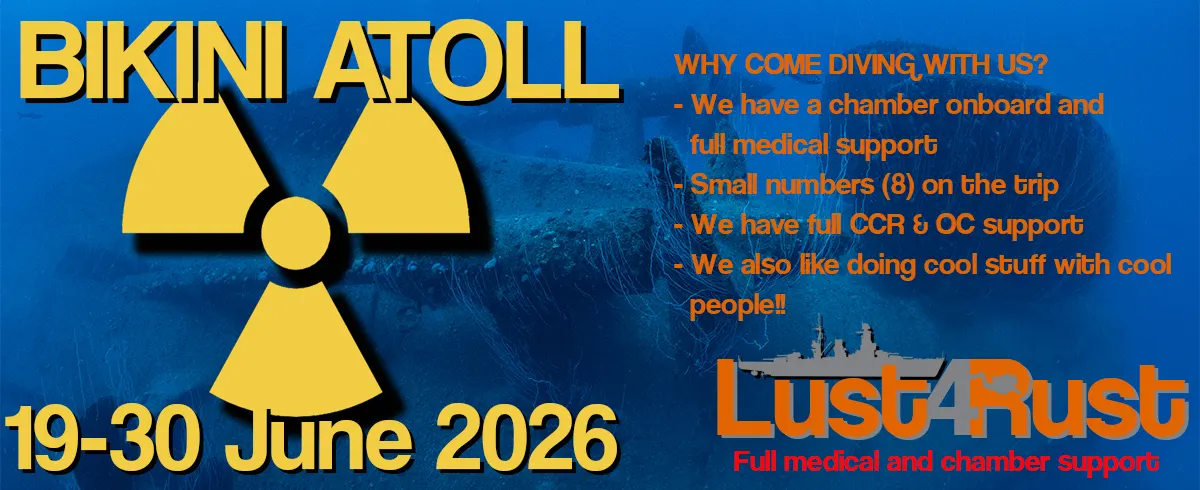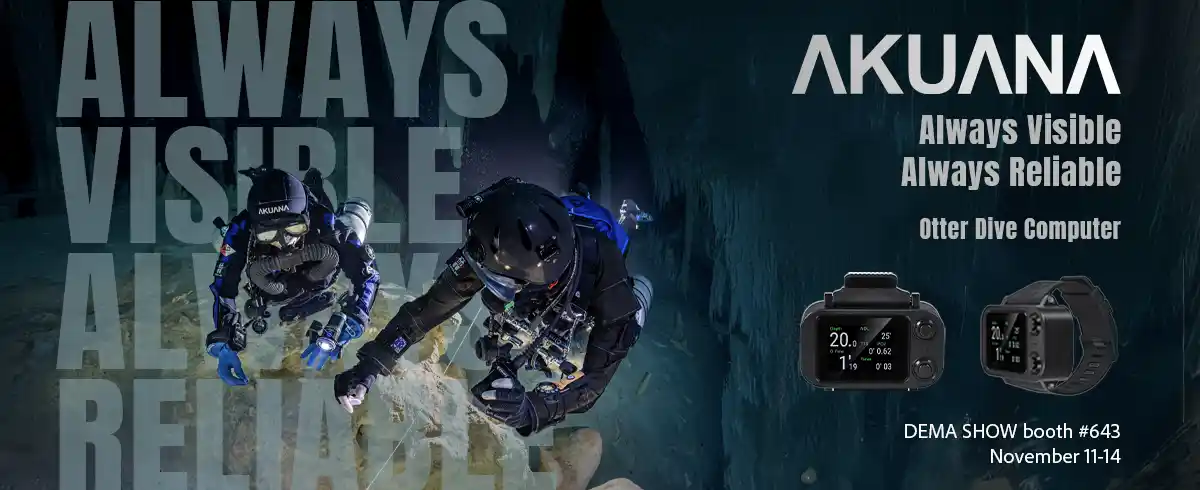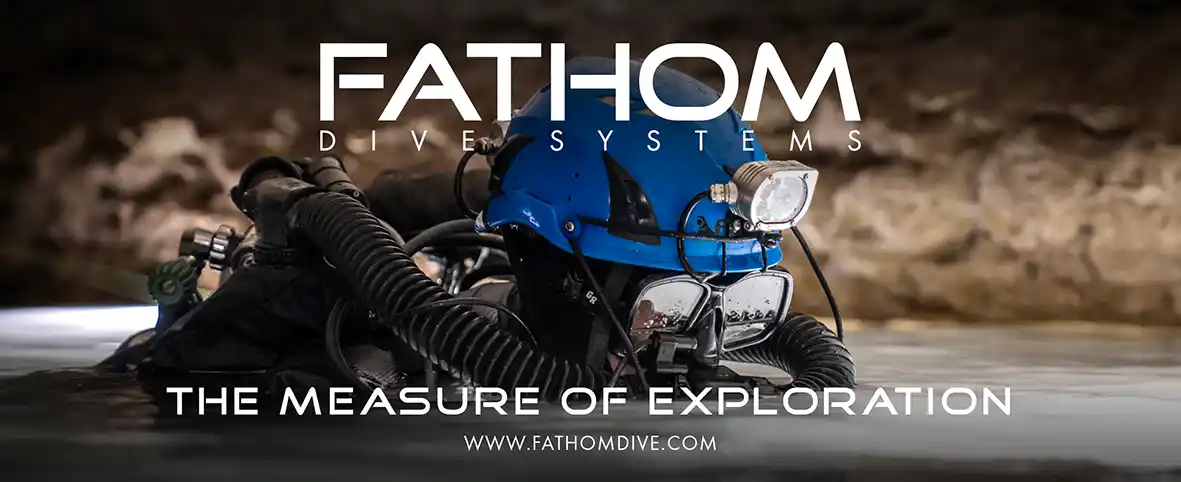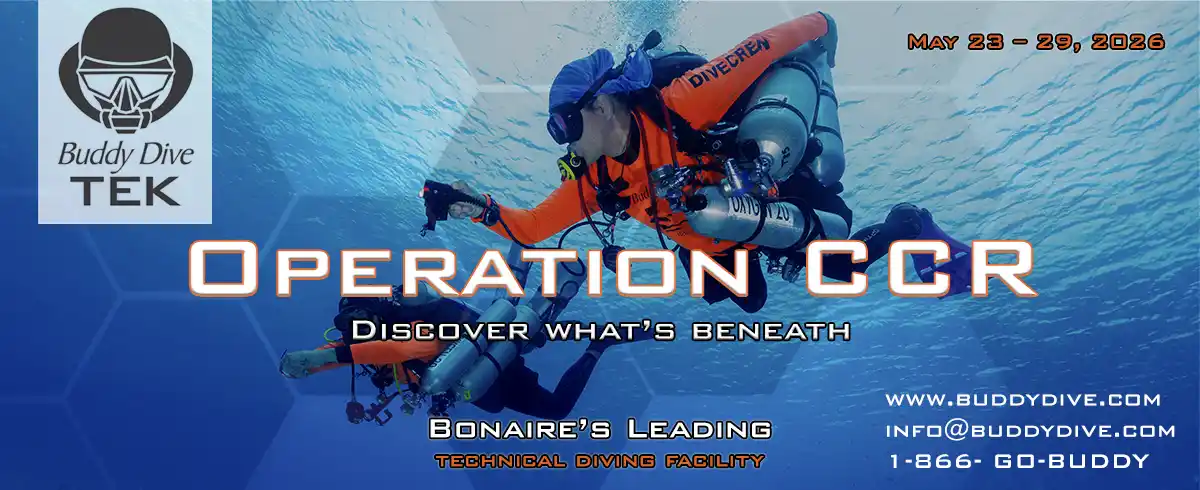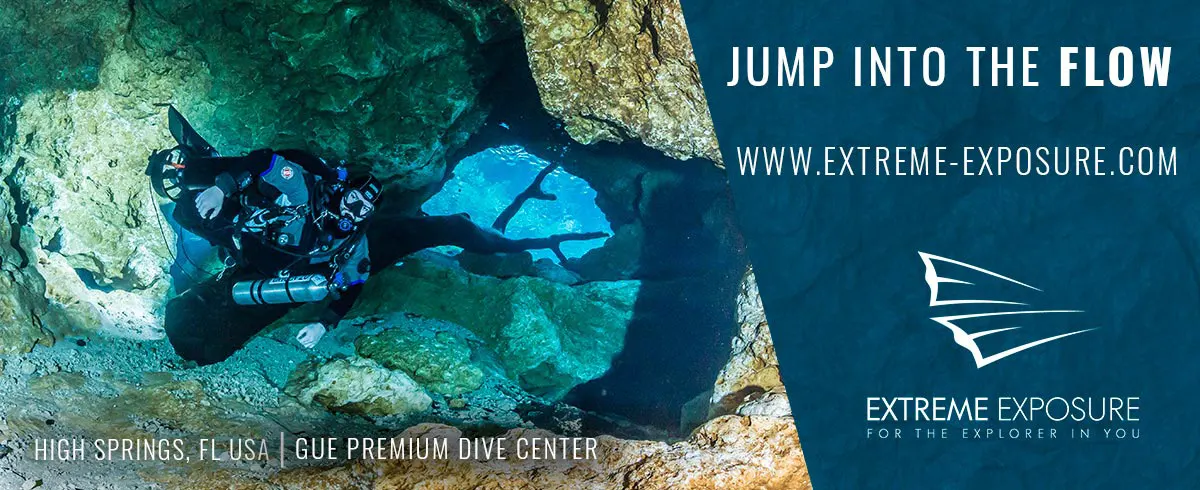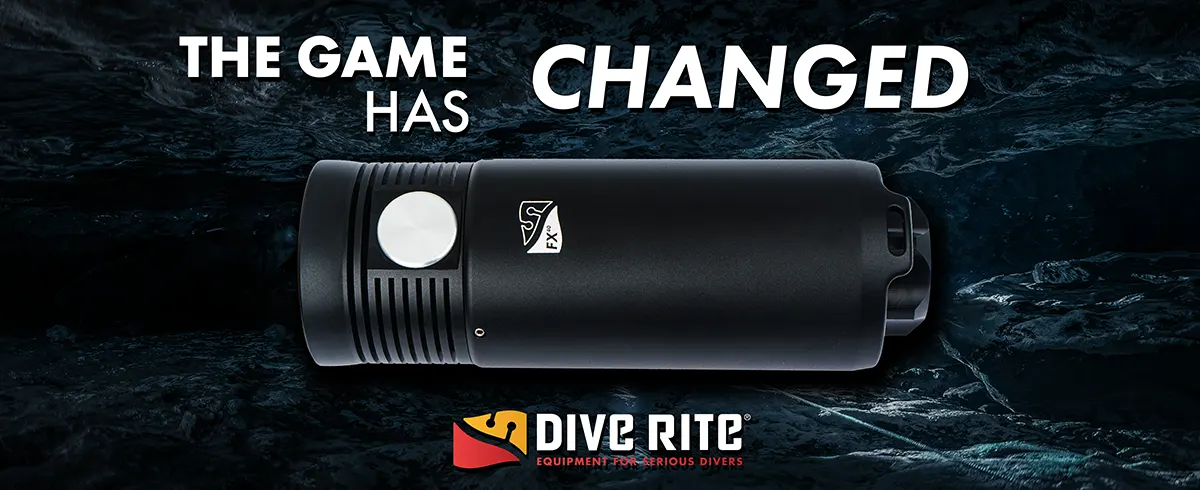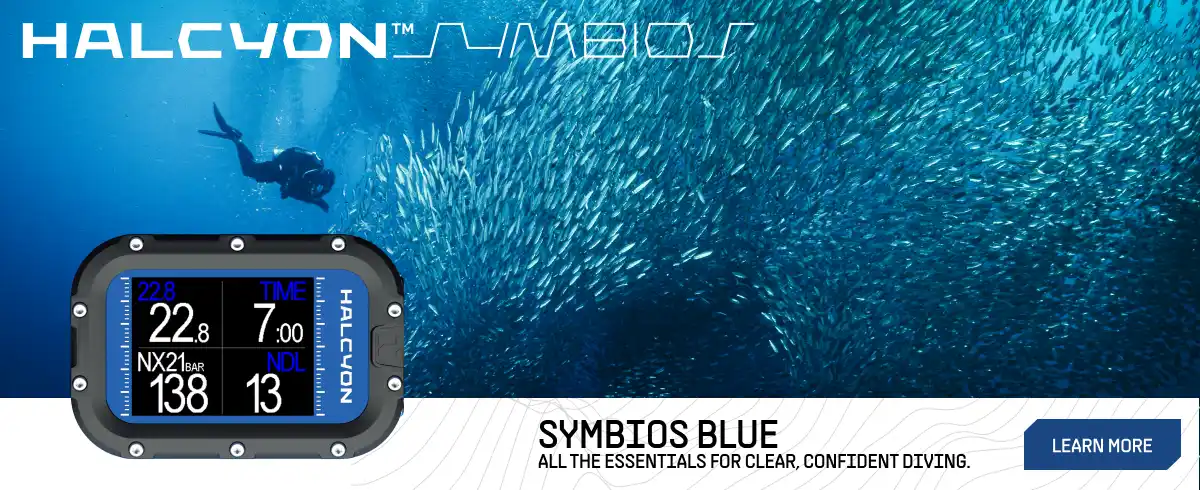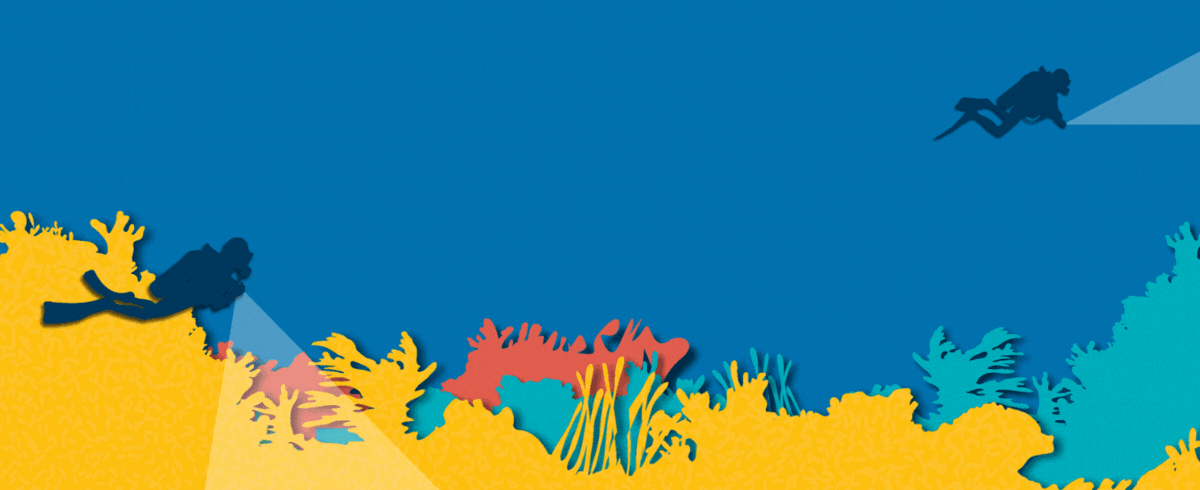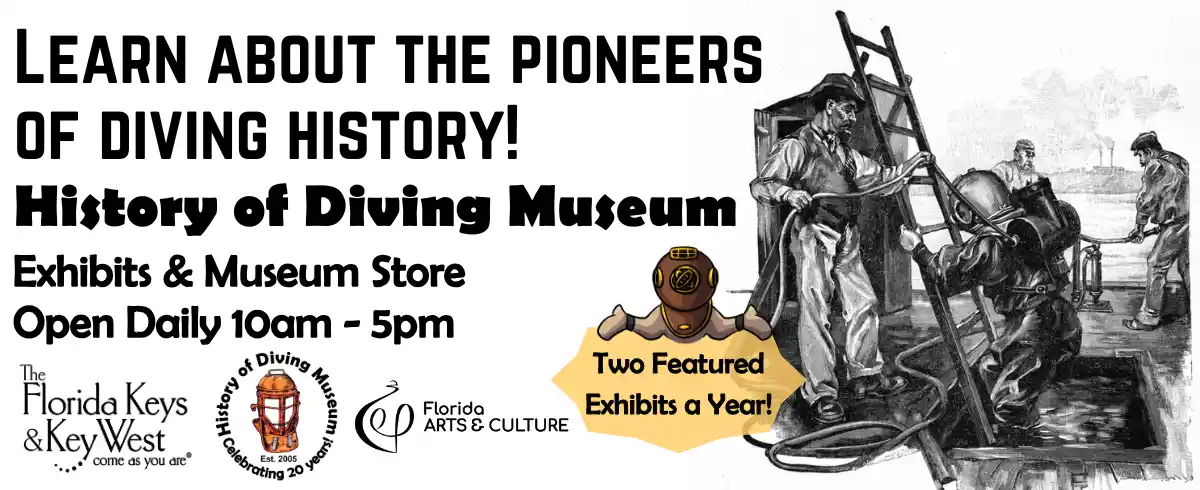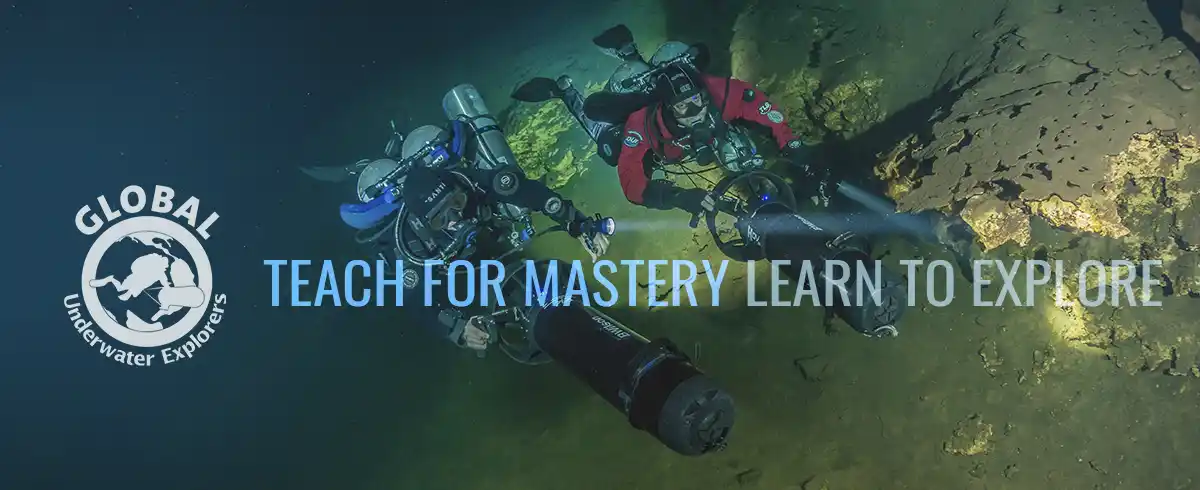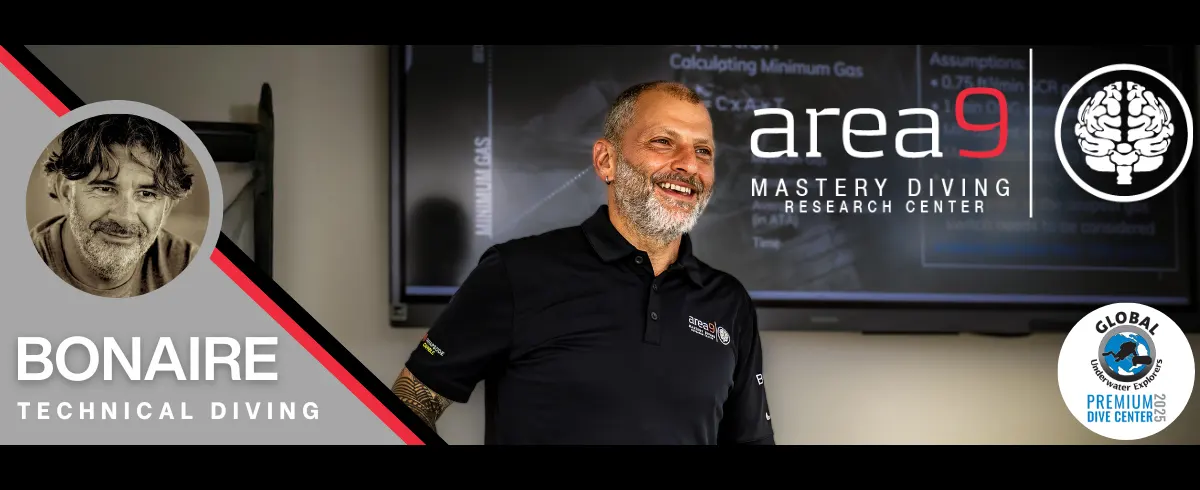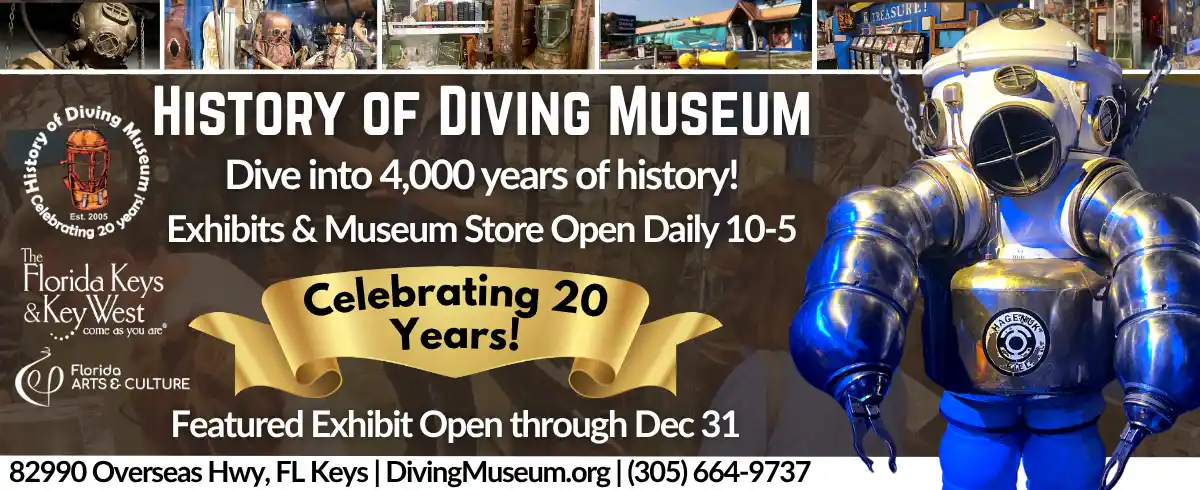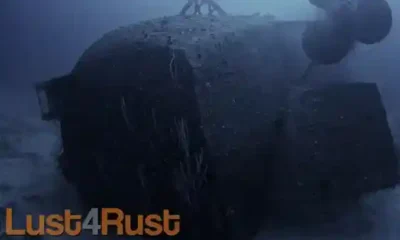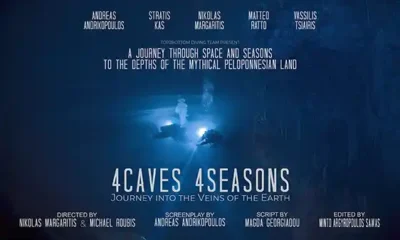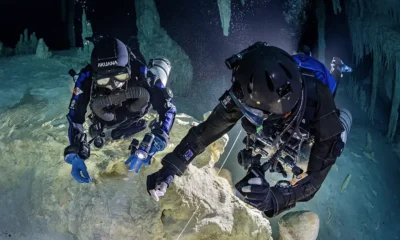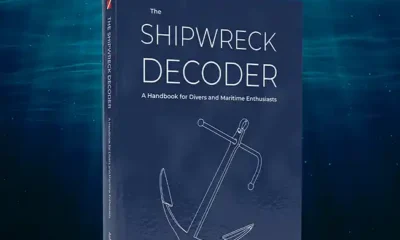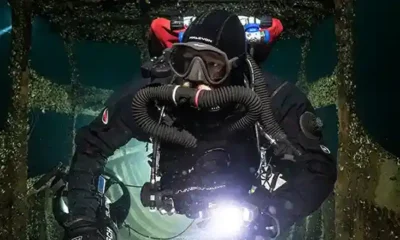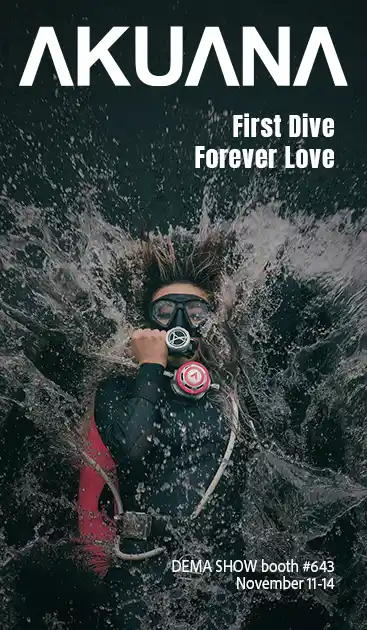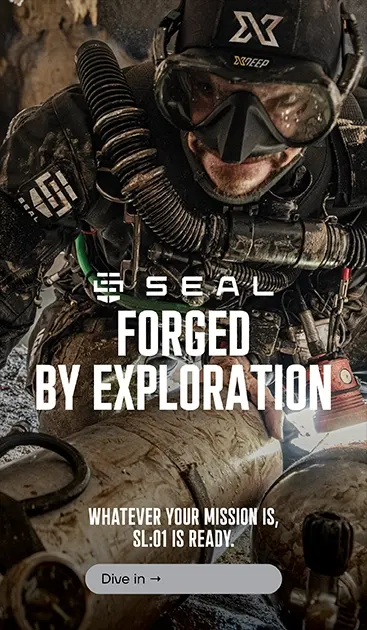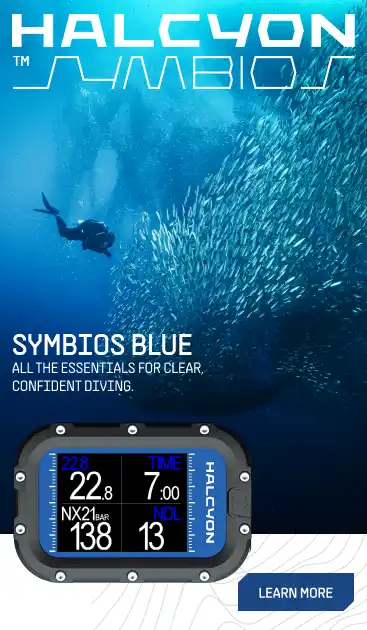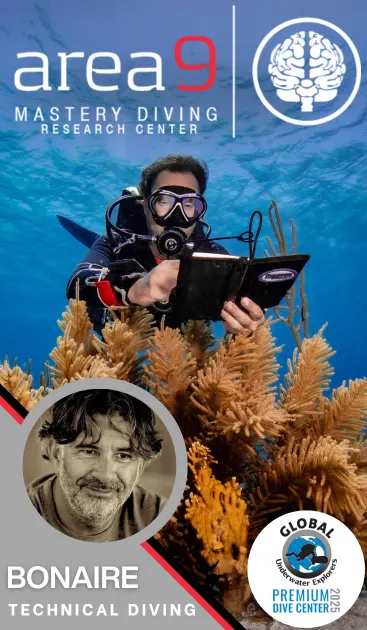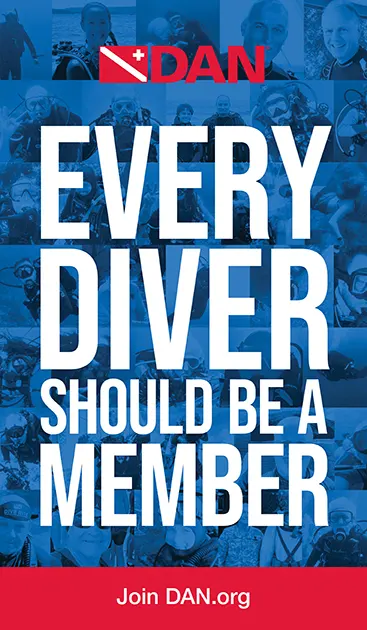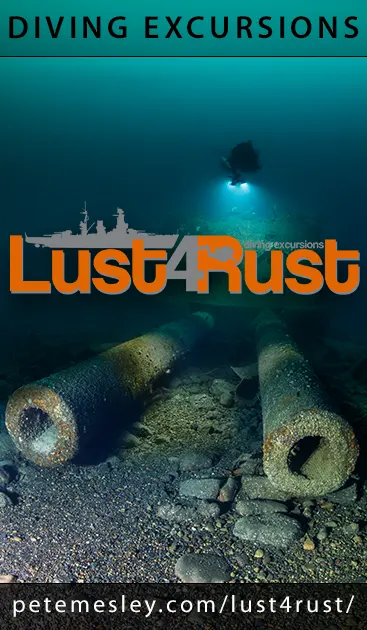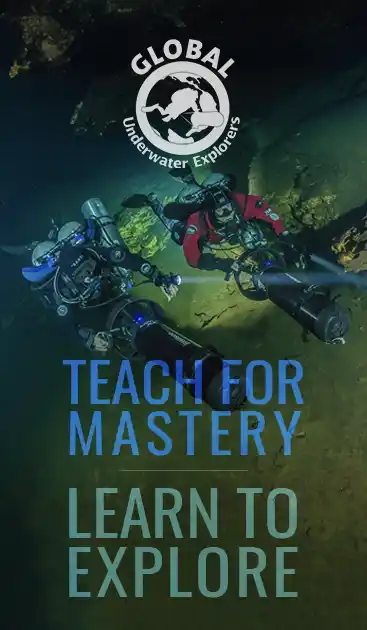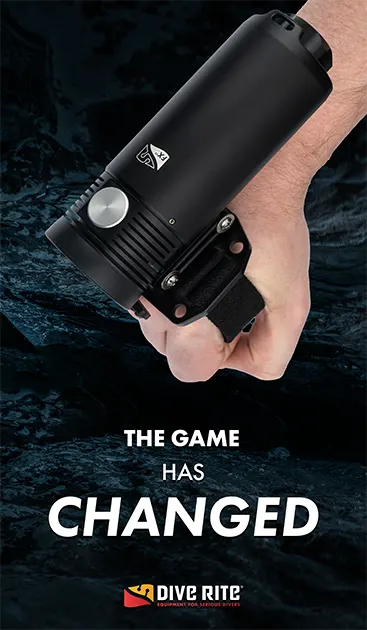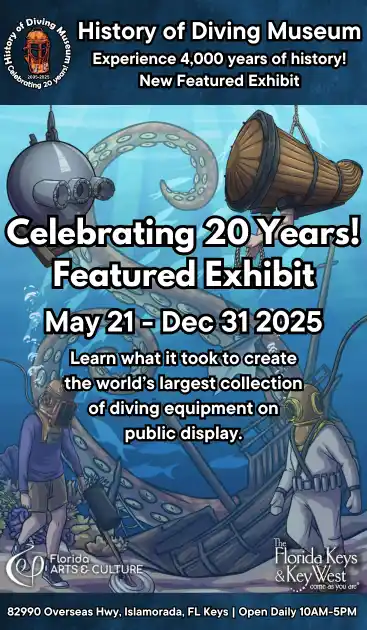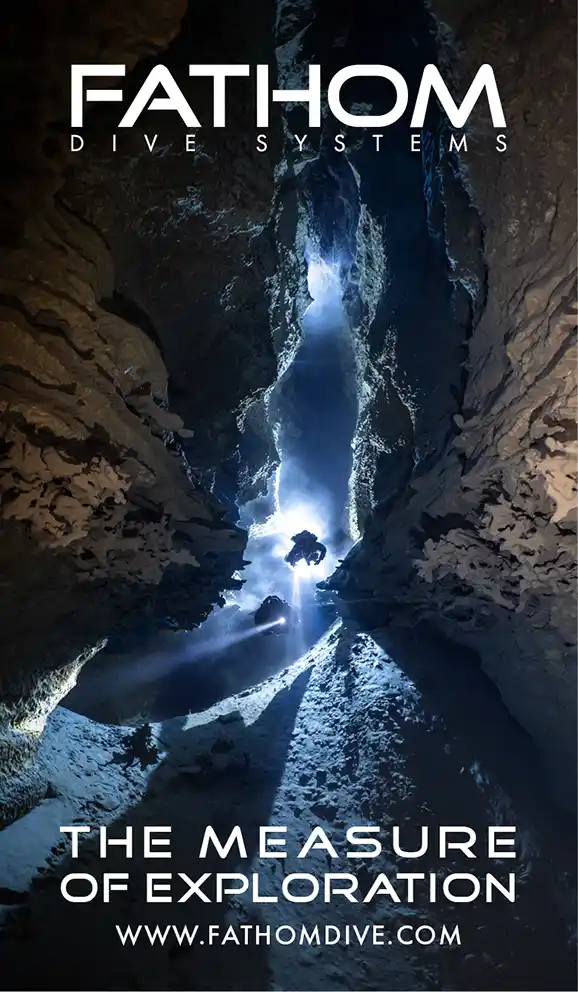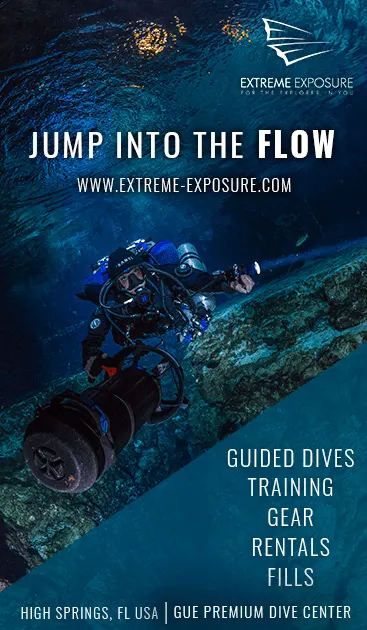Latest Features
Discovering a Deep Kriegsmarine Shipwreck
by Marinos Giourgas

The island of Leros is located 170 nautical miles (nm) from Piraeus, Athens’s main port; it belongs to the Municipality of the Dodecanese islands in the South Aegean Sea. During the Greek Revolution of 1821, the island was liberated from Ottoman rule, and its geography rendered it a very important supply base for the Hellenic Navy. However, in 1830, when the Treaty of London determined the borders of the newly-established Greek state, the island was given back to the Ottoman Empire.
In 1912, during the Libyan War against the Ottoman Empire, Italy occupied all the Dodecanese islands. In May of the same year, the island of Leros was seized by the Italian Navy cruiser San Giorgio. The Greek population that lived on the Dodecanese islands declared their autonomy in an effort to unify with Greece, but the outbreak of WWI helped the Italians retain the control of the islands.
In 1919, Greek Prime Minister Eleftherios Venizelos and Italian Minister of Foreign Affairs Tommaso Tittoni reached a secret, non-binding agreement with the intent to return the Dodecanese islands to Greece—all except Rhodes. But, after the Greek defeat in the war between Greece and Turkey, the Italians cancelled the agreement. However, this agreement did allow the British to use Leros as a naval base from 1916 to 1918, taking advantage of its strategic position in the Aegean Sea.
Nevertheless, the cancellation of the agreement and the Treaty of Lausanne confirmed the Italian possession of the Dodecanese islands. During the following years, the Italian regime Italianized the islands. Italy planned to fortify Leros and develop it into a major naval base—one that could control this vital area of the Aegean that connects Europe with the Near East and the Dardanelles. Benito Mussolini saw this small island as a crucial base for Italy’s domination in the eastern Aegean Sea.

Leros during WWII
In 1940, Italy entered the Second World War and, along with Germany and Japan, became one of the Axis Forces—the three principal parties fighting against the Allies. The island suffered severe bombing raids from the British, and, because of its geomorphology—its numerous natural coves—it provided excellent anchorage. After Crete, Leros became the second most bombed island during WWII.
Three years later, on September 8, 1943, Italy signed an agreement with the Allies, ceased fighting with Germany, and joined the Allies. After the Italian armistice, Prime Minister Winston Churchill attempted to secure the Aegean Islands and seized the opportunity to open a new front against Hitler. Consequently, British reinforcements arrived on the island which had begun to be bombarded by the German Luftwaffe.
The most iconic attack was that against the Hellenic Navy’s flagship, the Vasilissa Olga and the HMS Intrepid which were both sunk while anchored in the Port of Lakki. One of the most significant and more violent battles of WWII took place in the Aegean Sea on November 16, 1943. During Operation Taifun’s amphibious and airborne assaults, German forces landed on Leros and managed to capture it after 52 days of fierce fighting between German and the British forces.

The Early Hours Of The November 15, 1943
On the September 20, 600 soldiers with equipment disembarked from HMS Intrepid and HMS Echo and landed on Leros. In the early morning of November 15, the HMS Echo was again anchored at island—this time in the bay of Alinta near the British HQ. From this position, Echo could bring much-needed supplies and rescue survivors from combat vessels that had been sunk by the Germans and (which ended up in the seabed of the Aegean) .
The destroyer HMS Echo fulfilled its mission and began moving away from the bay. However, a beam of light from the Germans in Pano Zymi revealed the destroyer, and soldiers began firing at it with light weapons. The strong German headlight spotted not only the HMS Echo but also the F331 (a light German Marinefährprahm landing craft) along with several other German landing crafts in the bay of Alinta.
The British destroyer shone its lights on the German Pi-La boat 482—which had originally been thought to be a British ship—and believed it was being pursued by the F331. Onshore, the Germans believed the Pi-La boat to be an enemy vessel when they observed that the British were not attacking it. Adding to the chaos of the early morning of November 15, the German landing crafts were spotted by two British torpedo boats (MTB 266 and 315) that had left their base on the island of Kastelorizo under cover of a smokescreen and attacked the two German landing crafts, managing to sink the Pi-La 482.
The F boats returned fire at the HMS Echo, which had also been spotted by the British torpedo boats. The MTB 315, one of the two torpedo boats, was preparing to attack the destroyer, believing it to be a German vessel. The MTB 315 managed to identify the HMS Echo in time to call off the attack, but it was at that moment that the British destroyer fired on the F331 and sank it to the Aegean seabed in just minutes while the German vessel, loaded with ammunition, exploded violently.
From the area of the sea battle, the German F-123 and F-497 and two other Pi-La boats managed to evade and returned to their base.

Diving an Unknown Leros Wreck
Back in 2011, in the interest of highlighting the underwater cultural heritage of the island of Leros, the University of Patras and UFR team, under the guidance of Kostas Kouvas, performed a series of scans with the use of sonar and magnetometers of the seabed of the island. During this research, the team located a significant number of targets and registered them for further investigation.
Revisiting and diving the area of Leros has been in the cards for Aegeantec since 2003. The organization participated in the first UFR team’s underwater research project on the island—an effort that led to the publication of the 2003 book, “52 days 1943:The Queen Olga and the Battle of Leros.”
On the evening of November 25, after long weather delays, we were on the ferry from Piraeus to Leros in order to dive and document the Aegean seabed targets from the notorious battle of Leros.
We arrived early the next morning. After settling down in the Crithoni’s Paradise Hotel—which supported our operation and provided accommodation for the team—we met with Kostas Kouvas at Hydrovius Dive Center where he and his son Tasos helped us prepare our equipment. As we discussed the targets that we planned to dive,we moved our deco cylinders and DPVs in order to get ready for the next day’s dive.
“From our list of targets, the main goal was to dive the wreck at 84 m/276 ft to document it further; the only piece of information available was a sonar image from the 2011 research project. We knew it was not going to be easy.”
From our list of targets, the main goal was to dive the wreck at 84 m/276 ft to document it further; the only piece of information available was a sonar image from the 2011 research project. We knew it was not going to be easy. From the available data, we surmised that the vessel was lying upside down with its hull facing the surface.

We were prepared to see a German light landing craft as our researcher George Karelas gathered more intelligence after studying the records for the battle of Leros. After a long sleepless night and a fast breakfast, we met at the dive center and got ready for the dive. Our photographer, Vasilis Spyropoulos, had the difficult task of taking nice and detailed photos to assist our researchers in identifying the craft. I had the video camera on my scooter. Earlier that morning, Kostas and Tasos had been to the spot and prepared the shot line. Upon arrival at the dive site, we got ready and jumped in the water with our BO cylinders, DPVs, and cameras. After our surface checks, we started our descent.
The Aegean Sea is famous for its blue color—and for the light and the clarity of its waters. However, on that day, Poseidon chose to remind us that there could also be bad days in the Aegean Sea. On our way down along the shot line, we noticed the phytoplankton and the tiny particles that were hovering mid-water after weeks of consistently high seas.We immediately thought that this was not going to be a dive in the typical, bright environment of the Aegean.
Luckily, the shot line was close to the craft; we noticed its shadow from about 75 m/246 ft. I put the strobe on the line and, after adjusting my camera and lights, I signaled Vasilis and started approaching the dark shadow of the wreck—only to discover that part of it was covered by a fishing net. This only added to the difficulty of our task.

About one-third of the way from the point where the wreck starts towards its other end, the net was gone. So, we managed to take a few photos and videos of the visible parts of the craft (which was, indeed, upside down). The metal structure was covered with marine life, and parts of its superstructure were severely damaged with big holes and deformations—indicating that there had been an explosion before the vessel sank.
At the far end of the boat, there were still damaged fishing tools and ropes from the trawler that vigorously attempted to free its net from the obstacle of the wreck. We did another round of the wreck and the nearby area and we registered as many items and points of interest for its identification as possible and then we gave a thumbs up to end the dive. We collected the strobe and started our slow ascent to the surface along the shot line where we met with our support diver at 21m where he took the deep BO cylinders, the DPVs and the cameras and after two hours we surfaced and met with Kostas, Tasos and the rest of the team on the dive boat.



Where No One Has Been Before
After all these years of diving I still cannot find anything that can beat the feeling of being in the first team which dives a historic wreck. It does not matter if the wreck is a huge warship, an airplane or a small auxiliary boat, the moment you realize that no one has been down there before your team you start smiling and have that feeling of accomplishment that make you forget about the endless days of anticipation and preparation for the dive.
We felt the same way after diving this unique and rare WWII relic, the F type Kriegsmarine light German Marinefährprahm. A vessel that was originally designed for a possible invasion to England but eventually ended up being used in all WWII theatres of war. Their building started in April 1941 with a total of about 700 vessels commissioned until the end of war. Their length was 47m to 50m and their beam was 7m, powered by three diesel engines. They could carry three to four tanks and/or personnel and equipment during landing operations.
Their main advantage was their versatility as they could also operate in rivers and they played a significant role in the German Navy’s operations in the Aegean as they were transported through the neutral Turkish territory cruising the Dardanelles after being assembled first in Bulgaria.
We believe that this vessel is the F331 after carefully examining the visuals from our photo and video cameras where we spotted details and data that revealed the identity of the craft and combined it with the archives from our sources. Of course, this outcome would not have been possible without the assistance of the acclaimed researcher, author of the book “Kos and Leros 1943” and an expert in the subject of the battle of Leros Mr. Tony Rogers, who was keen in contributing to our efforts in researching the identity of this wreck.

Conclusions
Team Aegeantec continues its mission in highlighting wrecks of historic value and assist in their documentation so that future generations appreciate the battles that took place and shaped the world. Of course, this is a dynamic process but as long as we are aware of the past we can navigate through the present. The local authorities fully support our operations, which take place by respecting the findings and their historic value and embrace our efforts by accepting the challenge of revealing the secrets of the Aegean depths around the island of Leros. We are planning to go back to Leros soon as this is a very important island with tens more underwater mysteries to be solved, with the purpose of making it known to the international technical diving community as a top diving destination. Afterall it is not by accident that Leros is often called “Malta of the Aegean”.
DIVE DEEPER
InDEPTH: A Report on Greece’s Vickers Wellington Wreck by Marinos Giourgas
InDEPTH: A Greek JJ-Palooza on HMS Ermine by Marinos Giourgas
InDEPTH: Take Only Pictures, Leave At Most Bubbles? The Case for Wreck Preservation by Rupert Simon
InDEPTH: A Dive into Malta’s UW Cultural Heritage with Timmy Gambin by Michael Menduno
InDEPTH: Finding a P38 Lightning by Fabio Giuseppe Bisciotti
InDEPTH: Surveying and Identifying a Sunken JU 88a German WWII Aircraft by Fabio Giuseppe Bisciotti

Marinos Giourgas is an active PADI, TDI, and IANTD technical and rebreather diving instructor based in the southern coast of Athens, Greece, and he is a brand ambassador for Otter Drysuits. He started his diving career in the 1990s and, since then, his enthusiasm has allowed him to connect with nature. His passion for adventure and WWI & II wrecks has made it possible for him to participate in several expeditions in the Greek Seas to discover and explore the underwater relics of the past. He is the founder of AegeanTec, a team of avid divers offering technical, trimix, and CCR diver training. He manages the technical diving section of one of the biggest dive centers in the southeast coast of Athens, providing training and guiding tekkies to unspoiled dive sites that only few—if any—will ever see. Free time for him is spent pursuing alpinism and mountain biking.
References
- 52 days 1943: The Queen Olga and the Battle of Leros, V. Mentogiannis, K. Mitsotakis, G. Nikolaidis
- Kos and Leros 1943, Tony Rogers
- G. Karelas, personal archives
- Tony Rogers, personal archives
- The war in the Aegean Sea, Dr. Peter Schenk
- Kriesgmarine fast landing barges, Yuferev Sergey
- WW2 wrecks.com
- The wreck of the German marinefährprahm F131 in Marmaris, K. Kogiopoulos

